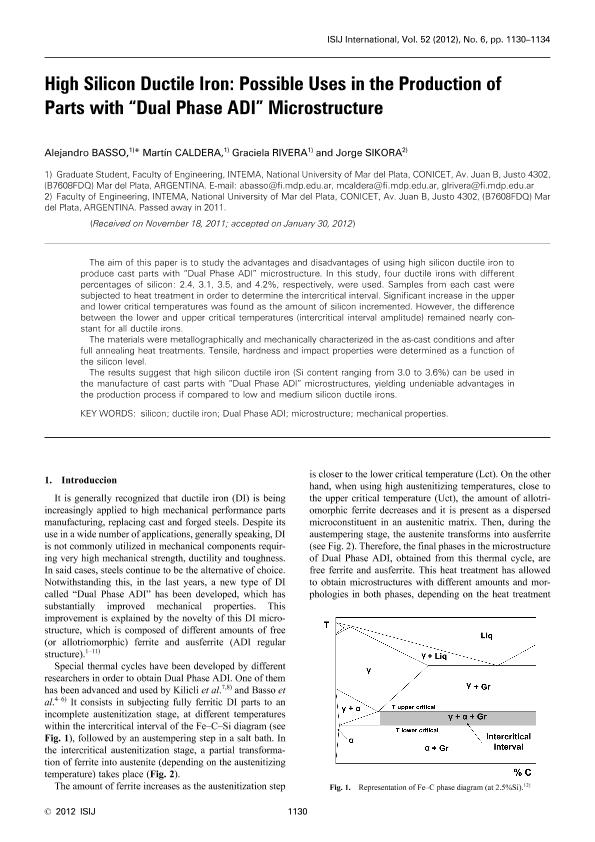Artículo
High silicon ductile iron: possible uses in the production of parts with ?dual phase ADI? microstructure
Fecha de publicación:
02/2012
Editorial:
Iron Steel Inst Japan Keidanren Kaikan
Revista:
ISIJ International
ISSN:
0915-1559
Idioma:
Inglés
Tipo de recurso:
Artículo publicado
Clasificación temática:
Resumen
The aim of this paper is to study the advantages and disadvantages of using high silicon ductile iron to produce cast parts with "Dual Phase ADI" microstructure. In this study, four ductile irons with different percentages of silicon: 2.4, 3.1, 3.5, and 4.2%, respectively, were used. Samples from each cast were subjected to heat treatment in order to determine the intercritical interval. Significant increase in the upper and lower critical temperatures was found as the amount of silicon incremented. However, the difference between the lower and upper critical temperatures (intercritical interval amplitude) remained nearly constant for all ductile irons. The materials were metallographically and mechanically characterized in the as-cast conditions and after full annealing heat treatments. Tensile, hardness and impact properties were determined as a function of the silicon level. The results suggest that high silicon ductile iron (Si content ranging from 3.0 to 3.6%) can be used in the manufacture of cast parts with "Dual Phase ADI" microstructures, yielding undeniable advantages in the production process if compared to low and medium silicon ductile irons. © 2012 ISIJ.
Palabras clave:
Dual Phase Adi
,
Ductile Iron
,
Mechanical Properties
,
Microstructure
,
Silicon
Archivos asociados
Licencia
Identificadores
Colecciones
Articulos(INTEMA)
Articulos de INST.DE INV.EN CIENCIA Y TECNOL.MATERIALES (I)
Articulos de INST.DE INV.EN CIENCIA Y TECNOL.MATERIALES (I)
Citación
Basso, Alejandro Daniel; Caldera, Martin; Rivera, Graciela Leonor; Sikora, Jorge Antonio; High silicon ductile iron: possible uses in the production of parts with ?dual phase ADI? microstructure; Iron Steel Inst Japan Keidanren Kaikan; ISIJ International; 52; 6; 2-2012; 1130-1134
Compartir
Altmétricas




